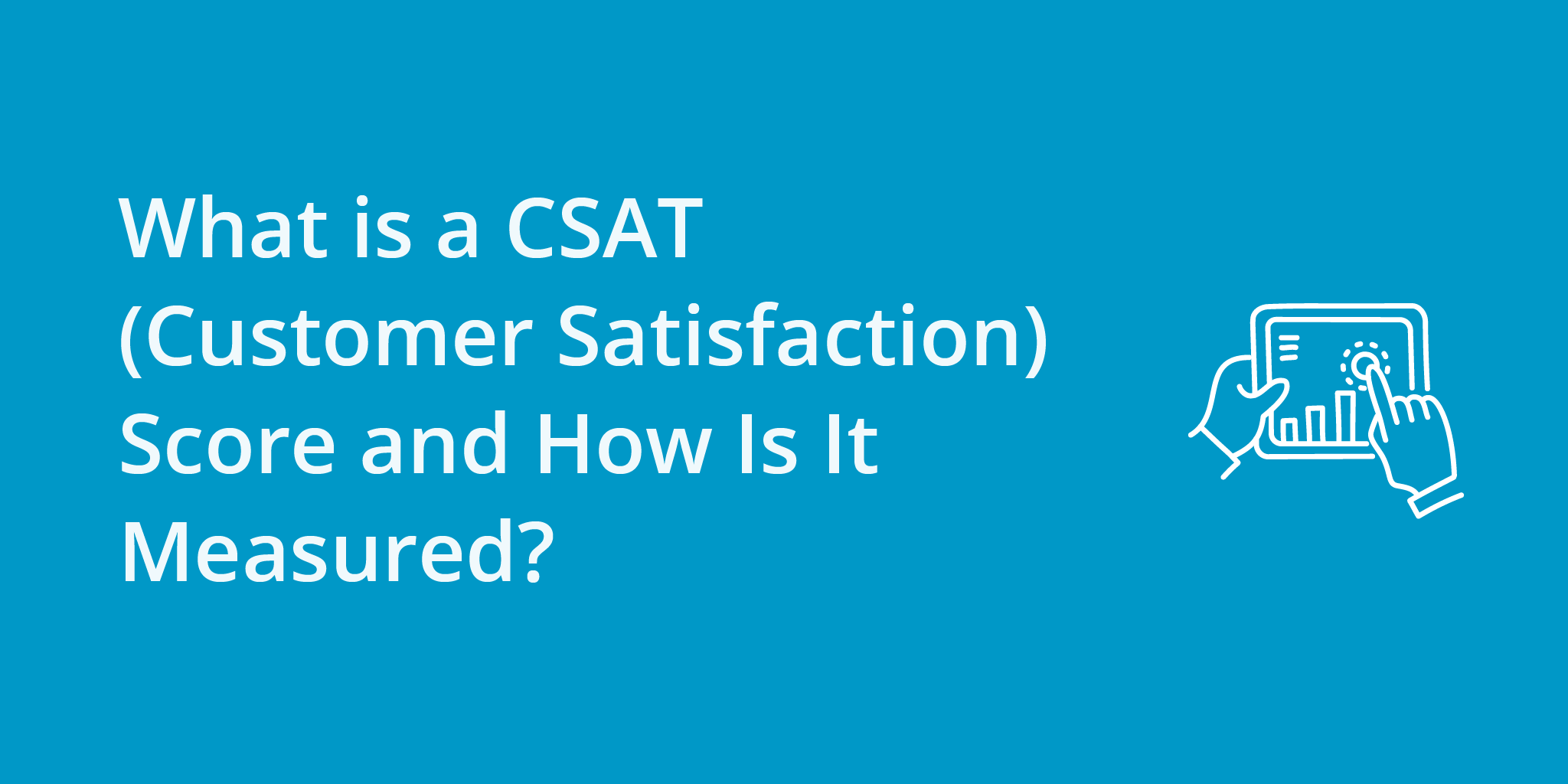Table of Contents
- What Is CSAT and Why It Matters
- How CSAT Is Measured
- CSAT vs. NPS vs. CES: Comparing Customer Satisfaction Metrics
- Best Practices for Effective CSAT Surveys
- Strategies to Improve Your CSAT Scores
- Challenges in Using CSAT (and How to Overcome Them)
- Advanced Techniques for Leveraging CSAT Data
- Case Studies: Successful CSAT Implementation Examples
- The Impact of CSAT on Business Growth and Customer Loyalty
- Emerging Trends in Customer Satisfaction Measurement
- Conclusion
- References
Customer Satisfaction Score (CSAT) is one of the most widely used metrics in customer experience management. It provides a direct insight into how happy customers are with a product, service, or specific interaction. In today’s competitive market, understanding and improving CSAT is vital – satisfied customers are more likely to remain loyal, spend more, and recommend your business to others.
This comprehensive guide explores everything you need to know about CSAT: what it is and why it matters, how to measure it (including survey methods and calculation formulas), how it compares to other metrics like NPS and CES, best practices for designing CSAT surveys, strategies to boost your scores, common challenges and how to overcome them, advanced techniques like predictive analytics and AI sentiment analysis, real-world case studies, the impact of CSAT on business success, and emerging trends in customer satisfaction measurement.
What Is CSAT and Why It Matters
Definition:
Customer Satisfaction Score (CSAT) is a key performance indicator (KPI) that measures how satisfied customers are with a particular experience or aspect of your business. In simple terms, it’s the average rating customers give to the question: “How satisfied were you with X?” – where X could be a product, a purchase experience, a support interaction, or the overall service. Customers typically respond on a numerical scale (for example, 1 to 5 or 1 to 7, from “very dissatisfied” to “very satisfied”). A high CSAT means customers generally had a positive experience, while a low CSAT signals dissatisfaction.
Importance:
CSAT is important because it gives a direct, tangible measure of customer happiness. A strong CSAT indicates that your product or service is meeting customer expectations, which often translates to repeat business and loyalty. Satisfied customers tend to buy again and often become brand advocates, spreading positive word-of-mouth. On the other hand, low satisfaction can alert you to problems that may drive customers away.
Key Points:
- Monitoring CSAT helps businesses catch issues early and continuously improve the customer experience.
- Customer satisfaction is closely tied to critical business outcomes: companies that excel in CSAT often see better customer retention, more referrals, and higher revenue per customer.
- It’s much cheaper to retain happy customers than to acquire new ones, so improving satisfaction directly supports growth and profitability.
- CSAT matters because it quantifies the quality of your customer experience in a way that everyone – from frontline employees to executives – can understand and act upon.
How CSAT Is Measured
Measuring CSAT is straightforward: it’s usually done through customer surveys asking a satisfaction question. However, there are different methods to collect responses, and a couple of ways to calculate the score. This section covers the common survey methods, the formula for CSAT, and what counts as a “good” CSAT including industry benchmarks.
CSAT Survey Methods
The most common way to measure CSAT is by asking customers to fill out a brief survey shortly after an interaction or transaction. The classic CSAT question is: “How satisfied were you with your experience?” and customers answer by selecting a rating on a scale. The scale can vary (e.g. 1–5, 1–7, or 1–10), but a 5-point scale (1 = very unsatisfied, 5 = very satisfied) is frequently used for its simplicity.
When and how to ask: Timing is critical – CSAT surveys are usually sent immediately or very soon after the customer’s experience while it’s still fresh in their mind. Depending on your business and touchpoint, you can collect CSAT in various ways:
- Email Surveys: After a purchase or support interaction, send an email asking the customer to rate their satisfaction. This method is common in e-commerce and SaaS.
- In-App or On-Site Surveys: For web or mobile services, trigger a pop-up or in-app survey when the user completes an action (for example, after completing an order or a live chat session). These are unobtrusive and reach the user in context.
- SMS or Messaging Surveys: Send a text message with a survey link or an embedded rating (e.g., “Reply with a number 1-5 to rate your experience”). This works well for quick feedback after deliveries or service appointments.
- Phone/IVR Surveys: Especially in call centers, customers might be asked to rate their satisfaction at the end of a support call (through an automated phone system or by speaking to an agent who records the score).
- Point-of-Service Surveys: In physical locations, you might collect CSAT via printed receipts with a survey link, kiosk tablets, or even simple feedback buttons (smiley face/frowny face buttons at an airport or store exit are essentially capturing immediate CSAT input).
Regardless of the method, the survey should be short and easy to complete. Often it’s just the one rating question plus an optional follow-up question (like “What’s the main reason for your score?” for qualitative insight).
CSAT Calculation Formula
Once you have collected responses, calculating the CSAT score is usually done in one of two ways:
- Percentage of Satisfied Customers: This is the most common method. You define which responses count as “satisfied.” For example, if using a 5-point scale, you might consider ratings of 4 and 5 as indicating satisfaction. The CSAT score is then the percentage of respondents who gave a satisfied rating. The formula is:
CSAT (%) = (Number of satisfied responses ÷ Total number of responses) × 100
For instance, if 80 out of 100 customers answered 4 or 5, your CSAT would be 80%.
- Average Score: Alternatively, some companies report the average rating itself (often on a 1–5 or 1–10 scale) instead of a percentage. For example, if your average satisfaction rating is 4.2 out of 5, that’s your CSAT score. You might also convert this to a percentage by dividing by the maximum (4.2/5 = 84%). In practice, both methods convey similar information.
Industry Benchmarks:
What qualifies as a “good” CSAT score? It can vary by industry and context. Generally, a CSAT in the 75%–85% range is considered quite good in many sectors. According to recent broad surveys, the average CSAT across all industries is around 77%. Some industries naturally score higher – for example, software and digital services often see CSAT scores in the high 70s (with an average around 79%) – whereas other industries like telecommunications or public utilities tend to have lower averages (often in the 60s).
CSAT vs. NPS vs. CES: Comparing Customer Satisfaction Metrics
CSAT is just one metric in the realm of customer feedback. Two other popular metrics often discussed alongside CSAT are Net Promoter Score (NPS) and Customer Effort Score (CES). Each of these measures a different aspect of customer experience. Understanding the differences will help you decide when and how to use each metric.
| Metric | What it Measures | Key Characteristics |
|---|---|---|
| Customer Satisfaction Score (CSAT) | Immediate satisfaction with a specific interaction or product | Short-term, transaction-level metric |
| Net Promoter Score (NPS) | Overall loyalty to the brand or company | Long-term, relationship-level metric |
| Customer Effort Score (CES) | Ease of getting what they wanted in an interaction | Process-focused metric |
Key Differences and When to Use Them:
- CSAT and CES are very actionable in the short term because they are tied to specific interactions, allowing you to pinpoint what went right or wrong. They are ideal for operational improvements at particular touchpoints.
- NPS is a strategic, long-term indicator that gives a broad sense of customer loyalty and brand perception. It is typically tracked quarterly or annually.
- Use cases: Use CSAT (and CES, if effort is a concern) to improve specific customer service interactions or product features, and use NPS to understand overall customer loyalty. Together, they provide a comprehensive view of the customer experience.
In summary, while a high CSAT indicates immediate satisfaction, it does not always equate to long-term loyalty (as measured by NPS). Combining these metrics can give you a well-rounded picture of customer sentiment.
Best Practices for Effective CSAT Surveys
Simply asking a satisfaction question isn’t enough – how you design and deploy your CSAT surveys greatly affects the quality of the feedback. Here are some best practices:
- Keep it short and simple: A CSAT survey should have no more than 2–3 questions. Use clear, straightforward language.
- Ask at the right time: Send the survey immediately after the interaction while the experience is still fresh, and avoid interrupting customers during important tasks.
- Make rating scales consistent: Use the same scale (e.g., 1–5 or 1–7) each time and clearly label the ends (for example, “Very Dissatisfied” and “Very Satisfied”).
- Avoid leading or biased wording: Ensure your questions are neutrally phrased to elicit honest feedback.
- Allow open-ended feedback: Include an optional text box so customers can explain their ratings.
- Only ask relevant questions: Focus on questions that directly relate to improving the customer experience.
- Use simple design and mobile-friendly format: Ensure the survey is easy to read and complete on all devices.
- Test the survey flow: Pilot your survey to catch any confusing wording or technical issues before a full rollout.
By following these best practices, you’ll obtain more responses and more reliable CSAT data. In short: keep it short, clear, and customer-centric.
Strategies to Improve Your CSAT Scores
Collecting CSAT data is only half the battle – the goal is to improve customer satisfaction. A low or mediocre score is a starting point for identifying issues and making changes. Here are some effective strategies:
- Close the feedback loop: Act on feedback by reaching out to customers who rate their experience poorly, apologizing, and fixing the underlying issues. This shows customers you are listening.
- Identify and fix root causes of dissatisfaction: Use techniques like the 5 Whys or fishbone diagrams to dig into recurring complaints and resolve them at the source.
- Improve customer service quality: Invest in training and empower support teams to provide friendly, fast, and effective service. Initiatives like first contact resolution can also help.
- Enhance product and service quality: Address issues with your product or service by refining features, fixing bugs, or improving operational processes.
- Make experiences easier (reduce customer effort): Streamline interactions (for example, by simplifying website navigation or return processes) so that customers face minimal friction.
- Personalize and humanize the experience: Tailor interactions to the customer, using their name and context to create a more personal connection.
- Set realistic expectations (and then exceed them): Be honest about what you can deliver and aim to over-deliver when possible, which builds trust.
- Engage and motivate your employees: Invest in employee satisfaction and training so that their positive interactions naturally improve customer satisfaction.
Implementing these strategies may require effort and investment, but the payoff is happier customers and a stronger business.
Challenges in Using CSAT (and How to Overcome Them)
Although CSAT is a valuable metric, several challenges can arise:
- Low response rates: Many customers ignore survey requests. Overcome this by keeping surveys short, sending polite reminders, and possibly offering small incentives.
- Survey bias and unrepresentative feedback: Extreme experiences may skew the results. Survey a large, random sample and analyze the distribution of scores.
- Survey fatigue: Avoid over-surveying the same customers by limiting survey frequency and ensuring each survey feels meaningful.
- Interpreting the score – what is “good” or “bad”? Use industry benchmarks and your own historical data rather than relying solely on a raw number.
- Lack of actionable insight (just a number): Pair quantitative scores with qualitative feedback to understand the “why” behind the numbers.
- Employees “gaming” the CSAT scores: Use CSAT as a tool for improvement rather than punishment, and implement measures to prevent manipulation of the process.
- CSAT is limited to short-term sentiment: Combine CSAT with other metrics (such as NPS and CES) to capture a broader view of customer loyalty and long-term satisfaction.
In summary, while CSAT provides valuable data, it must be used in context and alongside other metrics to truly improve customer satisfaction.
Advanced Techniques for Leveraging CSAT Data
Beyond basic analysis, advanced techniques can extract deeper insights from CSAT data and even predict future customer satisfaction:
- Predictive analytics for customer satisfaction: Analyze historical CSAT data alongside other customer information to identify patterns that signal future satisfaction or risk.
- AI-powered sentiment analysis: Use AI tools to quickly process large volumes of customer comments, categorizing sentiment and highlighting key topics.
- Text and qualitative analytics for root causes: Employ natural language processing to cluster feedback into themes and uncover the main drivers of satisfaction or dissatisfaction.
- Real-time CSAT analysis during interactions: Some systems now analyze conversations in real time to provide an immediate indication of customer sentiment, enabling prompt intervention.
- Integration with other systems (closing the loop automatically): Connect CSAT data to CRM or ticketing systems so that low scores automatically trigger follow-up actions.
- Predictive modeling for “What-if” analysis: Use statistical models to estimate how specific improvements might impact your overall CSAT.
- AI-driven personalization of service based on CSAT data: Tailor customer interactions in real time by using past CSAT data to guide support or outreach efforts.
These advanced techniques can transform CSAT from a backward-looking metric into a forward-looking strategic asset.
Case Studies: Successful CSAT Implementation Examples
Here are a couple of examples of companies that successfully boosted their CSAT through focused initiatives:
MeUndies – Achieving 99% CSAT through quality focus
An e-commerce apparel company revamped its customer service quality program and adopted a customer-first mindset. Their focus on continuous improvement led to a CSAT score of 99% over two years.
Global BPO – Improving CSAT by 17% with AI assistance
A global business process outsourcing company improved its CSAT by 17% by implementing an AI-powered writing assistant that helped agents communicate more clearly and professionally.
These case studies illustrate that whether through human-centric initiatives or technology-driven solutions, the goal is to identify what influences customer satisfaction and take focused action to improve it.
The Impact of CSAT on Business Growth and Customer Loyalty
Improving CSAT can translate into tangible business benefits, including:
- Customer retention: Satisfied customers are more likely to stay, reducing churn and preserving revenue.
- Greater customer lifetime value: Happy customers tend to spend more and are less price-sensitive.
- Positive word-of-mouth and referrals: Delighted customers naturally promote your brand to others.
- Impact on revenue growth: Higher satisfaction drives sales and market growth.
- Reduced costs: Fewer support issues and lower service recovery expenses result from higher customer satisfaction.
- Stronger brand image and differentiation: A reputation for excellent customer service can set you apart in competitive markets.
In summary, improving CSAT creates a virtuous cycle: satisfied customers stay longer, spend more, and help build a stronger brand.
Emerging Trends in Customer Satisfaction Measurement
As technology and customer expectations evolve, so do the ways companies measure satisfaction. Emerging trends include:
- Always-on feedback channels: Capturing feedback continuously throughout the customer journey instead of relying solely on periodic surveys.
- Multi-channel and omnichannel feedback integration: Combining data from in-store, online, mobile, and social channels to form a complete picture of customer sentiment.
- Leveraging social media and unsolicited feedback: Monitoring and analyzing customer opinions on social platforms to gauge real-time satisfaction.
- Emotion measurement and advanced metrics: Using tools such as emotion AI to capture not just satisfaction but the underlying emotional responses during interactions.
- Personalized and context-aware surveys: Tailoring survey questions based on customer history and context to increase relevance and accuracy.
- Micro-surveys and progressive profiling: Breaking feedback into short, focused surveys spread over time to reduce fatigue while building a detailed satisfaction profile.
- Focus on customer effort and resolution metrics: Complementing CSAT with measures like CES and first contact resolution for a fuller understanding of the experience.
- Automated action and AI-triggered outreach: Integrating survey results with CRM systems to trigger immediate follow-up actions based on customer feedback.
- Data privacy and customer control: Ensuring that feedback is collected and used in an ethical, transparent manner while giving customers control over their data.
Looking ahead, customer satisfaction measurement will become more continuous, integrated, and intelligent, enabling companies to better anticipate needs and personalize experiences.
Summing Up Customer Satisfaction Scores
Customer Satisfaction Score (CSAT) is a foundational metric for any business that cares about customer experience. It is more than just a number on a dashboard – it is a continuous feedback loop that helps you understand and improve your customers’ interactions. A high CSAT indicates that you’re on the right track, while a low CSAT serves as a valuable signal to identify and address issues.
In this guide, we defined CSAT and its importance, discussed how to measure it, compared it with other metrics like NPS and CES, and reviewed best practices and strategies for improvement. We also explored advanced techniques to extract deeper insights from CSAT data and shared real-world case studies that demonstrate its impact on customer loyalty and business growth. Ultimately, improving CSAT is about building stronger relationships with your customers – ensuring that every interaction contributes to long-term satisfaction and success.
Customer satisfaction is a journey, not a destination. Keep measuring, keep learning, and keep adapting.
References
- corporatefinanceinstitute.com – Corporate Finance Institute – Customer Satisfaction Score (CSAT) definition.
- zendesk.com – Zendesk – CSAT calculation formula.
- asknicely.com – AskNicely – Average CSAT benchmark (2023, ACSI data).
- asknicely.com – AskNicely – CSAT benchmarks by industry example.
- retently.com – Retently – Roles of NPS, CSAT, and CES.
- nicereply.com – Nicereply – Short-term vs. overall satisfaction metrics.
- surveymonkey.com – SurveyMonkey – ROI of customer satisfaction.
- staging.qsys-ea.com – Q-SYS (via HelpScout) – Customer satisfaction survey best practices.
- textexpander.com – TextExpander – Limitations of CSAT.
- creovai.com – Creovai – Survey fatigue as a limitation.
- retently.com – Retently – Closing the feedback loop benefits.
- maestroqa.com – MaestroQA Case Study (MeUndies) – CSAT improvement to 99%.
- grammarly.com – Grammarly Case Study – CSAT improved by 17%.
- nice.com – NICE PDF – Sentiment as predictor of satisfaction.
- tethr.com – Tethr – Future of CSAT surveys (conversation analytics).
- cmswire.com – CMSWire – Future of CX metrics beyond NPS.



